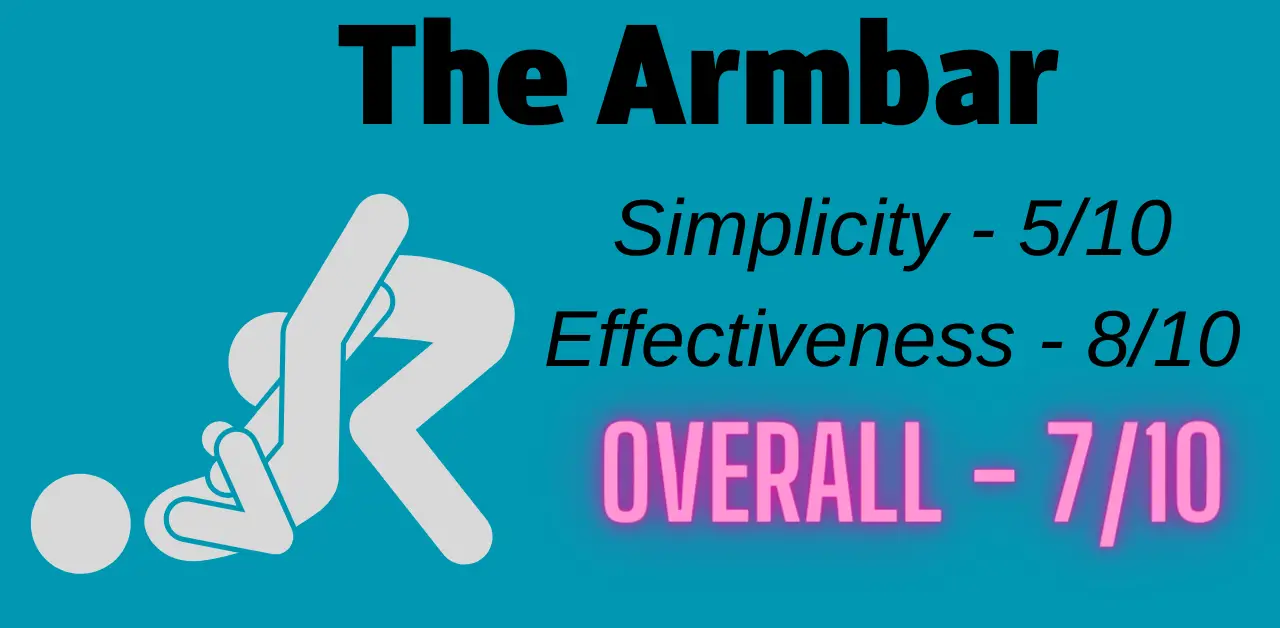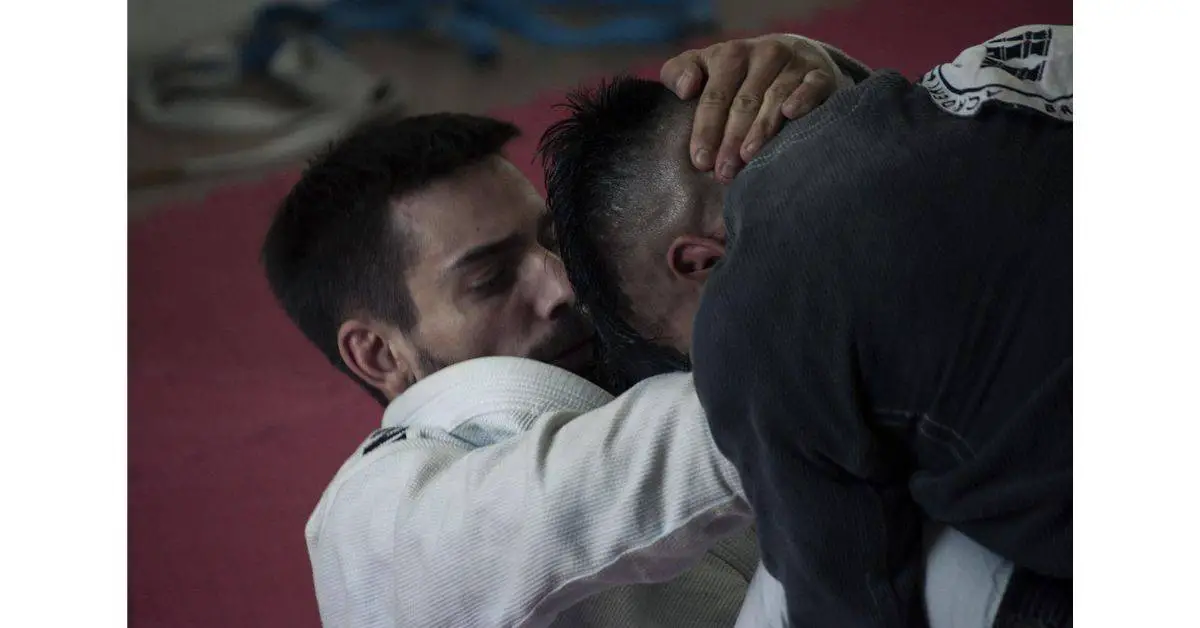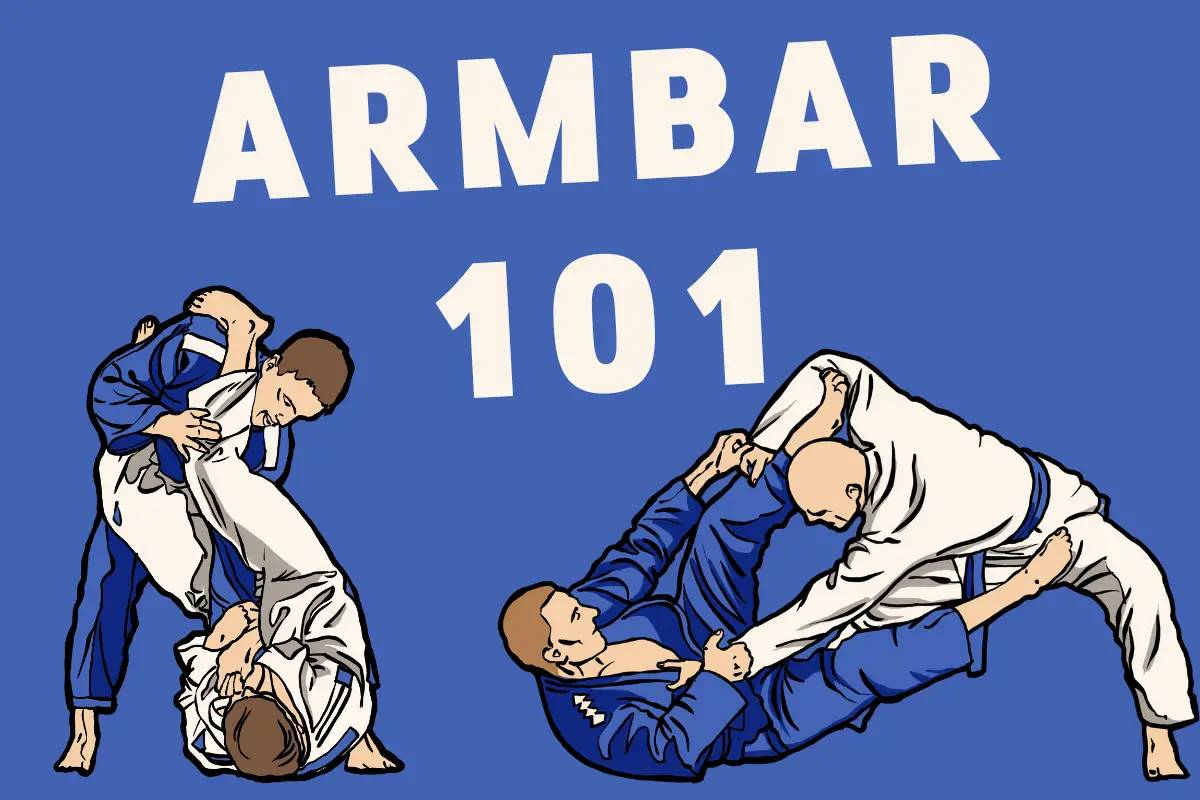If you want to begin submitting people quickly using an uncomplicated yet highly effective submission, this article is for you.
The armbar is a basic BJJ move. It’s also a fundamental submission in other martial arts, such as MMA.
Using it, however, takes a lot of practice and work. Hence, it’ll be best to familiarize yourself with its 3-basic variations. You’ll be in a much better position going forward in your training if you do!
This article will help you become from a BJJ novice to a BJJ novice that knows how to armbar fiercely. Try reading this article and see whether you succeed in understanding the variations.
If you can use the armbar, you’ll start to submit people, even those who are more advanced than you.
Try to learn the minor details to ensure you completely understand the basics. I’m confident that it will help you win your first couple of rolls.

Before we dive in, if you want to learn more about BJJ’s belt ranking system, follow the link to learn everything about it.
How to perform the armbar
Performing the armbar really isn’t as difficult as many BJJ novice practitioners think. It’ll take a few pre-moves to set yourself in a proper position.
To perform the armbar submission, you must first control the opponent’s posture, whether from the mount or closed guard position. Then, you want to get into a top lock position if you’re in guard. Or the S-mount if you’re in mount. What’s left is to hyperextend the opponent’s elbow, and you’re done.

Controlling the opponent’s head and elbow will be vital in performing the armbar, especially in the closed guard variation. Maintaining control of his posture is the first step in any variation.
Now, let’s examine the 3-primary armbar variations and how they differ.
Of course, different BJJ gyms will teach different variations. What I mean by that is that the minor details will continually change. There’s no one set of techniques and steps that everyone goes through.
No, different Brazilian Jiu-Jitsu gyms will explain it differently. However, you’ll notice that they follow the same guidelines. As such, learning from different people shouldn’t be too tricky, as the basics always remain.
Let’s go over the armbar from the mount, closed guard, and standing positions.
If you want to boost your BJJ skills, I wrote an article on the most powerful and effective BJJ submissions and the positions you must learn to call yourself a grappler. Check it out by following the link!
Basic armbar from mount
The armbar from the mount position is an easy-to-understand variation. You’ll see the one from the closed guard position soon after, which might be more complicated.
As such, you can start with the mount variation if you want to take matters slowly. I know it can be unintuitive to learn this submission, especially if you’re starting out on your journey. Well, don’t worry; time will do its thing. Next, you focus on learning more techniques. Alright, let’s begin.
The primary guideline is to break the opponent’s posture, which is the same guideline for the mount and closed guard variation.
How do you do that? You can, for instance, move his head to one of the sides. Both will work just fine.
Once you break his posture, you can look for an opportunity to move to the S-mount. Remain as tight as possible and bring your shin across the opponent’s face. Next, extend the opponent’s shoulder by rotating his wrist. Slide back on your back while maintaining the pressure and finish the armbar.
Let’s summarize this in steps:
- Be in a solid mount position
- Break the opponent’s posture
- Move to the S-mount
- Gain control of as many levers as possible
- Bring your shin to the opponent’s face
- Twist his wrist
- Slide back while maintaining pressure
- You’re in the arm bar position!
- Hyperextend the elbow while raising your hips
- Wait for the tap out
This is a reasonably simple variation of the armbar. I recommend learning it first before you move to the closed guard position. Good luck.
Before we dive in, if you want to learn an extremely effective BJJ submission and become a better grappler, follow the link to read about the Straight Arm Lock submission and how you can learn it today!
Armbar from guard
The armbar from the closed guard position is a fundamental submission to learn. Many beginners learn it one way. But unfortunately, the way they learn will not be sufficient in the advanced leagues. So, this section will examine a more advanced way of performing the armbar from the closed guard position.
You want to control the opponent’s head. This is critical to controlling his posture, the first step to performing the armbar. Typically, we’re looking to gain control of the head and elbow.
So, how do you do that? First, you bring the opponent’s elbow and head to your center line, hence, your chest. Ideally, you want to put his head over his elbow. If you can do that, you’ll start in a solid position.
This is how you perform the armbar from the guard position:
- Start from the closed guard position
- Bring the opponent’s elbow to your center line
- If the elbow isn’t in your inner hips, it won’t cut
- Maintain this position while controlling his head
- Bring the head above the elbow
- Throw your legs upward (top lock)
- Now, the elbow is locked inside your leg muscles
- Pivot and perform the armbar
- Finish either from the top or bottom position
- Wait for the tap out
You can see how uncomplicated performing a more advanced armbar variation can be. However, I recommend honing your armbar when you start your BJJ training.
The armbar from the closed guard position is a highly effective yet simple variation. Start working!
If you want to learn the Kimura, another highly effective BJJ finishing move, follow the link!
Armbar from standing
Performing the armbar from standing is much more difficult and complicated than all other variations. Likewise, most BJJ gyms don’t teach it, as it’s more effective for Sambo.
I’ve decided to include this armbar variation for those wanting to expand their horizons and learn a technique most people aren’t willing to put their time into.
So, here is how it goes:
Control the opponent by gripping his shoulder and the other hand. Fall down and place your foot on the opponent’s hips. Place your other foot on his neck and follow through to the submission itself.
While it’s not as hard to execute, most people don’t teach this technique, as it doesn’t really apply to BJJ or grappling marital arts. It might be used in MMA or in Sambo. But if you want to learn it, I highly recommend watching the following video.
Before we dive into the rest of the article, I have another article about the rear naked choke and what makes it so effective. Follow the link to learn how you can start doing it right now!
When should you use the armbar?
Having an ideal situation to execute the armbar is somewhat impossible. Different grapplers will choose to use it in different situations and times. Here’s the basic guideline for when to use the armbar:
You should use the armbar to control the opponent’s guard or mount. Likewise, you want to maintain pressure and break his posture before executing the armbar. You won’t be able to finish the submission if you don’t gain control over his posture.
I want to ensure you understand something. You always have to think creatively when you roll with someone. You must continually develop as a grappler; that means the times when you’ll use any armbar variations will change.
As such, there’s not a perfect time to use the armbar.
Eventually, the armbar is a fundamental move in BJJ. You want to use it whenever you think it’ll fit. While there’s plenty to lose if you don’t execute it correctly, the reward is massive. Thus, don’t be scared of diving into deep waters and using it often!
If you want to learn about the Triangle choke and what makes it so effective, follow the link!
Final words
Although learning to grapple can be unintuitive, learning the proper submissions first will save you plenty of time.
The armbar is an essential submission you must learn before entering the more advanced techniques. So whether you’re a novice or an advanced grappler, returning to the basics and understanding the minor details of the martial art you’re learning—is critical.
This is what I tried to accomplish with this article. Hopefully, you’ve been able to understand and start having a grasp of this beautiful grapple.
Martial arts are all about self-improvement through learning to fight. I recommend following this website if one of these things is of interest to you.
And, if you enjoyed reading this article, you’ll also enjoy reading about whether you should learn BJJ without or with a Gi.

